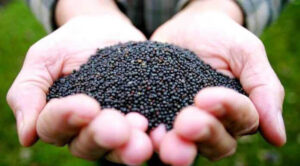
Ukraine exported 3.14 mln tonnes of rapeseed in the season-2024/25 (July 2024 – June 2025, marketing year, MY), down 15% compared to the previous marketing year and the lowest for the last three seasons, APK-Inform news agency reported.
The main reason for the decline, analysts said, was the decline in the oilseed harvest in Ukraine for several years in a row.
The experts pointed out that almost 89% of the total exports of rapeseed were to the European Union (91% in 2023/24 MY), or 2.78 mln tonnes, down 17% compared to 2024/25 MY. In terms of countries, the top three importers of Ukrainian rapeseed were Germany with the volume of over 1 mln tonnes (-18%), Belgium – 899 thsd tonnes (up 2.4 times), and the UK – 334 thsd tonnes (up 2.5 times).
“In the new season-2025/26, the downward trend of rapeseed exports is likely to continue, due to the expected minimum harvest of the crop in the last 4 years, as well as the possible introduction of the export duty for the oilseed, which is currently actively lobbied,” – the analysts said.
APK-Inform forecasts that in 2025/26 MY the exports of rapeseed from Ukraine will decrease by another 15%, to 2.7 mln tonnes.
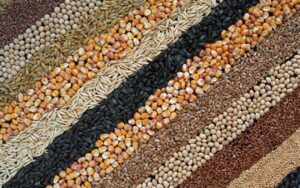
Today, June 12, the Council of the European Union recognized the equivalence of Ukrainian standards for the production of beet, sunflower, rapeseed, and soybean seeds with European requirements, according to the press service of the Council of the EU.
According to this decision, seeds of these crops produced in Ukraine will be able to enter the EU market. This means that EU-based companies will be able to diversify their seed production areas. The new rules will also help to maintain a continuous supply of high-quality seeds to the EU.
“The decision grants equivalence to beet, sunflower, turnip, and soybean seeds produced and certified in Ukraine, fodder plant seeds produced in the Republic of Moldova and officially certified by its authorities, as well as to the corresponding field inspections carried out. The equivalence confirms that the national procedures of the two countries offer the same guarantees regarding seed characteristics and rules for seed examination, identification, and control as those applicable to seeds harvested in the EU,” the statement said.
Moldova has received similar permission for fodder plant seeds.
The decision will enter into force 20 days after its publication in the Official Journal of the EU.
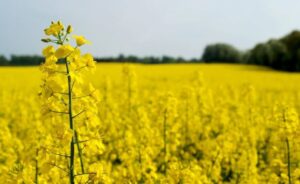
Despite improved weather conditions in May, rapeseed yields may be the lowest in four years, according to the information and analytical agency UkrAgroConsult.
Analysts noted that May weather conditions traditionally play a significant role in the development, growth, and formation of crop yields. Precipitation is particularly important this year, as the problem with moisture reserves has persisted since autumn and reached critical levels in spring. At the end of May, we have more significant reserves of productive moisture in the top meter of soil.
They drew attention to the fact that despite the improvement in weather conditions in May and the replenishment of moisture reserves, there are a number of negative factors that lead to a reduction in the rapeseed harvest forecast, in particular, a decrease in yield potential, crop discing, and the inability to meet the deadlines for agrotechnical operations.
Given the current situation, UkrAgroConsult has increased the level of crop losses and expects yields to be below the average for the previous three years. In a more pessimistic scenario, experts suggest that the rapeseed harvest will be the lowest in the last four seasons.
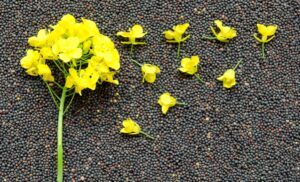
In 2025-2026 marketing year, the export of rapeseed from Ukraine may decrease to the lowest level since 2022-2023 MY and will amount to about 2.7-2.8 mln tonnes, down 13% compared to the current season, according to APK-Inform news agency.
The analysts noted that the reason for such a decrease is the expected decrease in oilseed production, as well as a possible increase in demand from the processing industry.
According to experts, in 2025, the production of rapeseed in Ukraine may decrease to the lowest level since 2022 due to the reduction of winter crops area as a result of moisture deficit in the fall of 2024 and poor wintering of crops in a number of major crop producing regions. In addition, cold weather, frosts and snow in the first decade of April may significantly worsen the situation.
According to APK-Inform estimates, the planted areas under rapeseed are 1.34 mln ha (-4%), while the harvested area may not exceed 1.17 mln ha (-10%) and may be even lower due to unfavorable weather conditions. The forecast of oilseed production in 2025 is about 3.35-3.4 mln tons (-8%).
As for the distribution of rapeseed in the new season, analysts believe that the situation will largely depend on the tariff policy of China and the US.
“We are currently witnessing the deterioration of trade relations between the US and China, the US and Canada, and between China and Canada, which will lead to the redistribution of trade flows of canola and processed products, and may change farmers’ plans for sowing this crop in major regions,” the agency said.
Several countries may try to replace Canadian oil and meal on the Chinese market by increasing production of rapeseed/canola, but the question is in the timing – the products are already in short supply and China needs to increase supplies now, not in the new season.
Due to the trade wars, China is expected to increase its demand for Ukrainian rapeseed oil and meal in the new season, which may increase domestic processing, but it will depend on the ratio of the cost of raw materials and oil on the Ukrainian market. In addition, it may be more difficult for Ukrainian companies to build up stocks, as farmers are in no hurry to sell raw materials under forward contracts.
“The trade may remain weak until the impact of frost and snow on the oilseeds in a number of European countries and in Ukraine in particular is assessed. It is also important to keep in mind that if the situation with tariffs does not change before the new season and all duties for Canada remain in force, Canadian canola may increase its presence on the European market, and, therefore, the window for the Ukrainian oilseed remains limited to the first half of the season,” APK-Inform summarized.
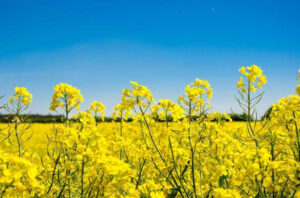
In 2024-2025 marketing year (MY, July-June), Ukraine remained the main supplier of rapeseed to the European Union, supplying 3.4 mln tonnes of the seed, up 5% compared to the same period of the previous year, APK-Inform reported citing the German Grain and Oilseed Farmers’ Association (UFOP).
“With the volume of 2.2 mln tons and the import share of 63%, Ukraine remains the most important country of origin, as in previous years. This is slightly higher than the last year’s volume of 2.1 mln tons,” the analysts said.
At the same time, the second wave of oilseed imports from Australia is expected in the second half of the season, which has already supplied 875 thsd tonnes of rapeseed to the EU market by mid-January. According to the research of Agrarmarkt Informations-Gesellschaft (mbH), this is about 19% more than in the same period last season.
“With the share of almost 26%, Australia is the second most important supplier of rapeseed to the EU, followed by Canada – 144 thsd tonnes,” the report says.
It is added that the volume of shipments from Canada increased more than three times compared to the previous year, although it remains at a rather low level. This is due to the fact that Canada mainly grows GM rapeseed varieties, while the EU has restrictions on the use of oil produced from them. Therefore, Canadian imports are mainly intended for biofuel production, APK-Inform added.
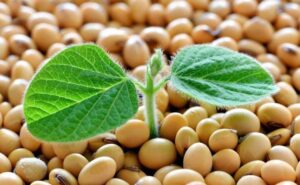
In the August report, the U.S. Department of Agriculture (USDA) raised the forecast of global oilseeds production in 2024/2025 MY by 4.5 mln tonnes to 690.5 mln tonnes due to the growth of soybean and rapeseed production, which partially offset the decline in sunflower, cotton, peanuts and palm kernel production.
Analysts increased global rapeseed production by 0.9 million tons to 88.8 million, mainly due to the expansion of rapeseed production in Russia. World sunflower production was reduced by 2.3 million tons to 52.5 million due to unfavorable weather conditions that affected yields in Ukraine, Russia, the EU, Turkey, Serbia and Moldova.
The USDA’s global soybean production in 2024/2025 is increased by 6.9 million tons to 428.7 million tons due to higher production in the US, Ukraine, Russia, India and Benin. Exports are increased by 1.0 million tons to 181.2 million due to higher exports to the US, Ukraine, Russia and Benin, partially offsetting lower shipments from Argentina. Soybean imports were increased for Egypt, the EU, Iran and Turkey. Global ending stocks of soybeans in 2024/25 MY increased by 6.5 million tons to 134.3 million, mainly due to higher stocks in China, the United States and Argentina, partially offset by lower stocks in Brazil.